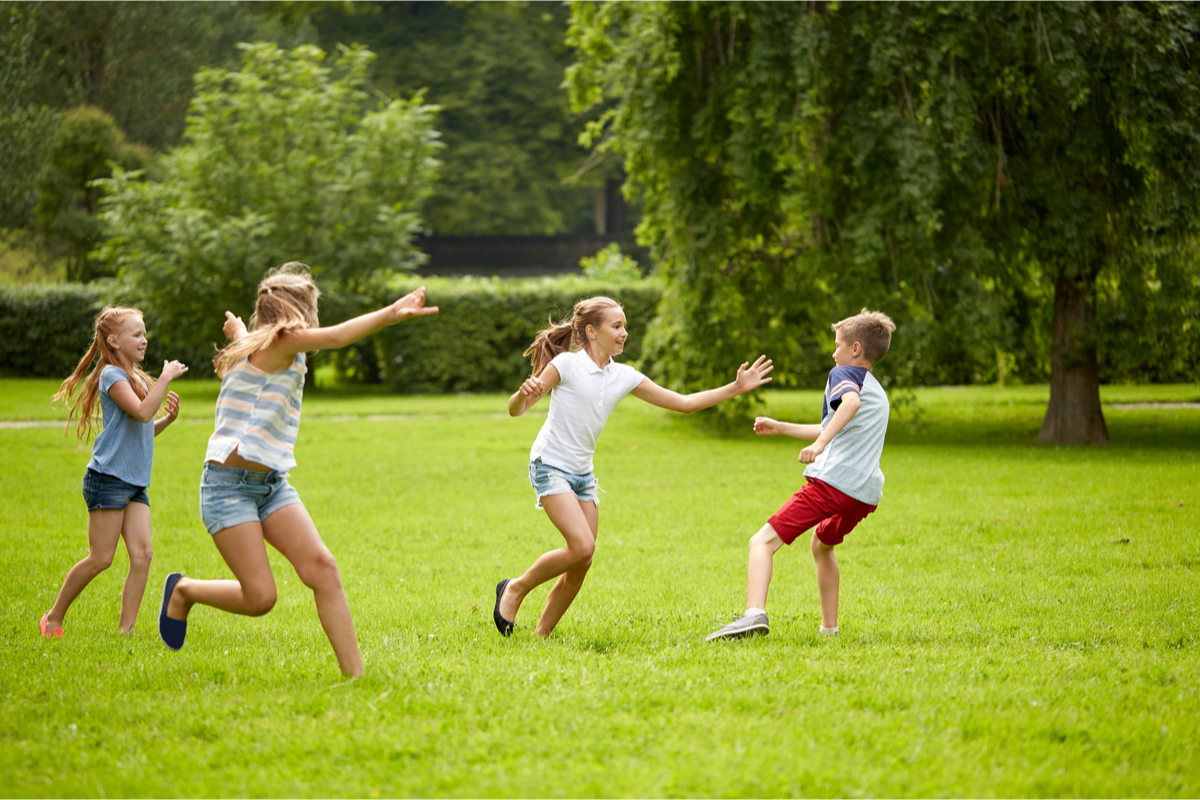“Tag, you’re it!” “Not it!” Who didn’t grow up playing tag at some point as a kid? It’s a playground and neighborhood staple.
Of course, everyone (especially the younger kids) always hated to be “It” because it was too hard to get someone out. Home base would frequently change, and teachers and moms usually had to try to figure out who was to blame when an argument about who tagged who broke out.
Despite the heated discussions, tag remains a mainstay with children, especially 7-year-olds. Tag is a great game to get kids running and thinking on their feet. The game also doesn’t require any equipment — just a group of kids who want to run around.
Tag is a pretty simple game to set up, and kids learn fast how to play it. One person is “It” and must catch another person. The first person “It” catches becomes the new “It,” and the game continues until the participants get tired or have to go home. While the traditional game of tag is super fun, there are variations that give the game a whole new twist. Here are some cool tag games to try with your kids.

Sock or tie tag
The great thing about this version of tag is that no one has to be “It.” All the players are an “It.” To play this tag version, each player tucks a sock, bandana, or a tie into his or her waistband. The sock or bandana hangs like a tail. The object is for each player to grab as many tails as possible, and the winner is the person who has the most. To keep sock tag rolling, set a time limit. Five to 10 minutes, depending on how many players, is a good block of time. When the round is up, count up tails, declare a winner, and play again.
All-it tag
All-it tag or “everyone is it” is another version that doesn’t have one person as the designated tagger. All the participants are “It” and can tag each other. Players are supposed to keep track of how many times they tag another player during the course of the round. (Players are on the honor system as far as keeping track.) Like sock tag, use a smartphone or watch to keep track of a round. The winner is the player with the most tags. To make the game harder, have players subtract the number of times they were tagged from the total number of times they tagged another player.
Flashlight tag
This fun version is ideal for sleepovers of after-dinner playtime in the neighborhood and combines two childhood favorites, tag and hide-and-seek. One player is designated as “It,” and the rest of the players run and hide. “It” has a flashlight, and when he or she shines a flashlight on another player, that person is out. You can make a variation of this game by playing all-it flashlight tag.
Freeze tag
Similar to regular tag, freeze tag has one “It.” When “It” tags a player, he or she is frozen. A player can be unfrozen and rejoin the game if he or she is touched by another player who is not “It.” To avoid a frustrated “It,” set a time limit for each round and rotate who is “It,” so each player gets a turn to be “It.”

Sharks and minnows
A classic swimming-pool game, sharks and minnows has found its way into every sport. So, it’s no surprise that sharks and minnows can also be a spirited tag variation. In this version, “It” is the shark. All the other players are minnows. When the shark says go, all the minnows begin to run around. If the shark tags a minnow, the minnow becomes a shark. The last minnow running becomes the new shark to start the next round.
Banana tag
A variation of all-it tag, banana tag is an active game that gives kids’ brains exercise, too. The game starts with everyone chasing each other because all the players are “It.” When a player is tagged, they must sit down on the ground until the person who tagged them is tagged. Once that happens, the players is back in the game. A round ends when one person is left standing and all the “bananas” are sitting on the ground.
Traditional tag or one of these six creative alternatives make for fun outdoor games any time of year. To keep tempers from flaring in a game of spirited tag, a few ground rules set by an adult are helpful, especially when all the tag players are 7. Tears usually happen when someone is tagged too hard, gets stuck being “It” for what seems like forever, or a player keeps changing up the basic rules of the game. Use a stopwatch or smartphone to keep time in any tag games involving one “It.” Rotating who is “It” makes being “It” more appealing. Eliminating a home base will keep kids from arguing over what is home base. If overzealous players tag too hard, play sock or flashlight tag instead because there isn’t any direct contact in these versions.
“Tag! You’re it!”



